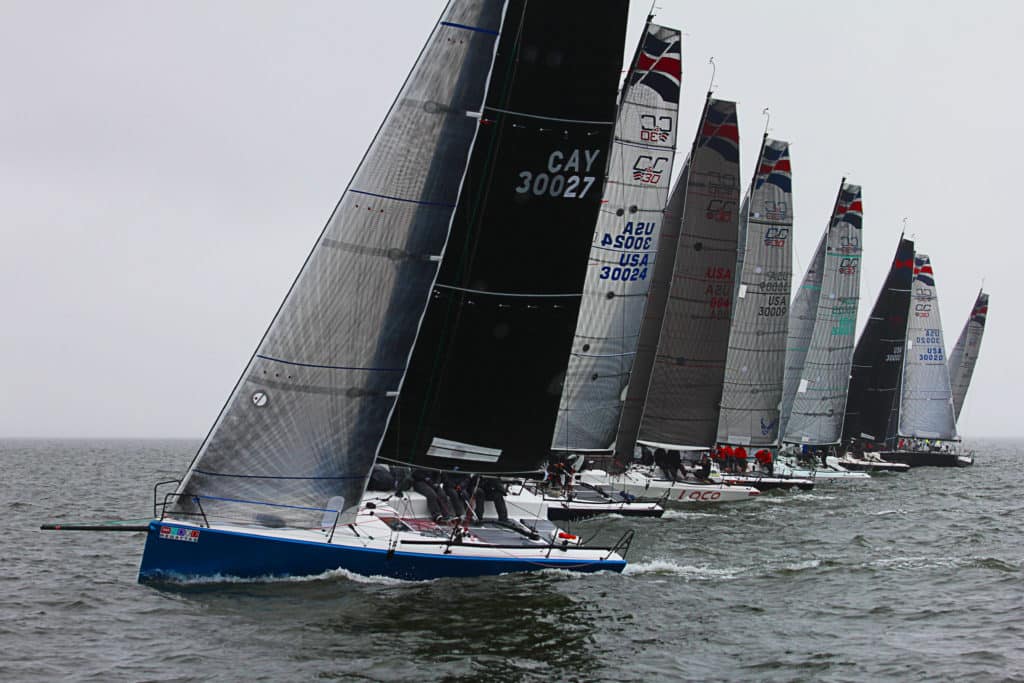
The best sailors stick to the fundamental rules. After all, the premise of a fundamental rule is that it works most of the time. If you are right most of the time and have decent speed, you will do very well. But what if you are a perfectionist and want to be right all the time, not just most of the time?
In sailing it’s a lofty goal, especially because we are trying to figure out something we cannot see—the wind—but it certainly does not hurt to try. When calling tactics I try my best to be right all of the time, and at the same time I try not to beat myself up when I make a mistake. One key to success is to have a short memory about mistakes and keep moving forward in the race, staying in the moment and making the best decisions possible until the race is over. After the finish you can think through any mistakes and learn from them.
When it comes to fundamentals, stating that a rule works most of the time is an admission that it doesn’t work all the time. Therefore, there are times when following the basic rule is not the best move, or perhaps two basic rules conflict, for example, “sail in more wind” and “sail toward the mark.” Sometimes you are on the lifted tack, but the wind is dying and you see more elsewhere. Should you tack and sail a header to get more wind?
The exceptional sailor knows when to break from the basics and which rule applies when two conflict, giving them a higher level of tactical accuracy. Here are a few examples to help you do so, as well.
Cross when you can unless you’re certain that continuing on your present tack will give you more gain. For example, you see there’s more wind the further you go, or you know that continuing takes you toward favorable current.
Sail in more wind unless you’re on the extreme long tack on a shifty day, and you know that, if you sail straight, you will get a massive shift to tack or jibe on. A 20- or 30-degree shift will give you a bigger gain than a little more wind. In tough tactical situations like this, you have to make a judgment call on what will give you the biggest gain. For example, sailing in slightly more wind will give you a two-length gain on those you tacked away from (in the absence of a shift), but getting a 20-degree shift that your competitor missed will give you an eight-length gain. In this situation, go for the shift.
Sail in more wind unless you’re sailing upwind and you’re already overpowered, ragging your main. Once you’re at this point, you’re going to be slower in more wind. If you are in 28 knots, you probably don’t need 35. Downwind would be different, so long as you can control the boat.
Sail toward the mark unless there’s a racecourse feature that will give you more of a gain, such as more wind, favorable current, or a better lane. Estimate your gains and pick the best option. When in doubt, favor the option to sail in more wind.
Keep it simple by not tacking or jibing too much unless it happens to be very shifty and playing the shifts will make up for extra maneuvers. Often on a 20- to 30-degree shifty day, sailing toward the mark is extremely powerful, and to do so requires tacking or jibing on all those fast-moving shifts.
Start at the favored end unless, after the start, you will be pinned from going to the correct side of the course. If the pin end of the line is favored, but you like the right side of the course, you may want to start near the boat to get right quickly. Sometimes you can win the pin, then tack and cross, but not often, so if the gain from going right is greater than the gain from starting at the pin, it’s better to start near the boat and assure you can get right.
You may also want to avoid the favored end if it’s overly crowded. Packs of boats are slow, and starting in a crowd can seriously reduce your chances of getting off the line with a lane. In this case, slide away from the crowd and understand you may not be winning after the start, but you will also not be deep, with a series-damaging race.
Don’t overstand the layline unless there’s significantly more wind past layline, or the layline is extra crowded. The speed from the increased wind or clear air sometimes makes up for the greater distance sailed.
Get to the racecourse one hour before the start unless it’s cold and windy. When it’s windy, tactics can be less important. Boatspeed and boathandling are paramount, so less tactical research is needed, and you don’t want to wear out the crew before the first race starts. Get out 30 to 45 minutes ahead of the first starting sequence instead, depending on how prepared you are.
Use sails that are fast in a variety of conditions unless you’re sailing a short regatta and the forecast confidence level is strong for a particular wind strength—then break out the specialty sails.
Tack and jibe on the shifts unless the maneuver costs too much, which is often the case on big boats or in catamarans that are slow to maneuver. Again, weigh the skills of the team and the potential gains and losses accurately.
Your head is probably spinning from these exceptions to the golden rules, but don’t fret: When in doubt, always stick to the basic rules first. Veer only from what is tried and true when you’re confident there is a better option.









